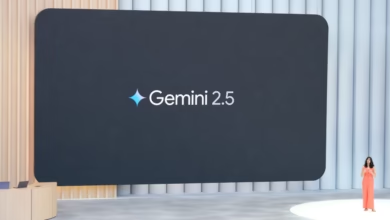Google’s Gemini 2.5 AI Challenges OpenAI in Enterprise Market

▼ Summary
– Google upgraded its Gemini 2.5 AI models to general availability, introducing Gemini 2.5 Flash-Lite as a cost-efficient option for enterprises.
– The models emphasize “reasoning” capabilities, allowing developers to control AI behavior for complex tasks or quick responses.
– Major companies like Snap and SmartBear are already using Gemini 2.5 for mission-critical applications, including AR and automated testing.
– Google restructured its pricing strategy, simplifying costs and introducing Flash-Lite to compete with budget AI providers.
– Google’s three-tier model lineup targets diverse enterprise needs, contrasting with OpenAI’s focus on premium models.
Google has taken a major step forward in the AI race by making its Gemini 2.5 models generally available for enterprise use, directly challenging OpenAI’s dominance in business applications. The tech giant unveiled three distinct versions of its AI system, each tailored to different performance and budget needs, signaling a strategic push to capture market share across enterprise segments.
The newly available Gemini 2.5 Pro stands as Google’s most advanced model, designed for complex reasoning, code generation, and multimodal analysis. Meanwhile, Gemini 2.5 Flash offers a balance of speed and capability for high-volume tasks, and the newly introduced Gemini 2.5 Flash-Lite provides a budget-friendly option for simpler automation needs. This tiered approach allows businesses to choose the right tool for their specific requirements, whether they prioritize intelligence, efficiency, or cost savings.
What sets Google’s latest AI models apart is their “thinking budget” feature, which gives developers control over how much computational effort the AI expends on a task. This means enterprises can instruct the system to spend more time analyzing complex problems or respond instantly to straightforward queries, optimizing both accuracy and operational costs. Such flexibility addresses a key pain point for businesses that need predictable, scalable AI solutions.
Early adopters are already putting these models to work in critical applications. Snap Inc. uses Gemini 2.5 Pro to enhance augmented reality experiences, while SmartBear leverages Flash to automate software testing. Healthcare tech firm Connective Health relies on the AI to extract vital data from medical records, demonstrating its reliability in high-stakes environments. These real-world implementations suggest Google’s models have reached the stability needed for enterprise deployment.
Pricing adjustments further sharpen Google’s competitive edge. The company restructured token costs to favor output-heavy applications, common in business use cases, while introducing Flash-Lite as an ultra-affordable option for basic tasks. By eliminating confusing pricing distinctions, Google has made it easier for enterprises to forecast expenses and scale AI adoption.
This move reflects a broader shift in the AI landscape. While OpenAI has focused on consumer-facing tools like ChatGPT, Google is targeting enterprises with production-ready AI that integrates seamlessly into business workflows. The company’s emphasis on reliability, scalability, and cost efficiency positions it as a strong alternative for organizations wary of deploying unproven AI solutions.
For businesses evaluating AI platforms, Google’s expanded lineup presents both opportunities and challenges. The variety of models allows for precise customization, but also requires careful assessment to determine which version aligns best with operational needs. As AI becomes integral to competitive strategy, enterprises must weigh whether to commit to a single provider or maintain flexibility across multiple vendors.
With Gemini 2.5 now in full production, Google is making a clear statement: it’s no longer just talking about AI’s potential, it’s delivering tools that businesses can use today. The battle for enterprise AI supremacy is heating up, and Google is positioning itself as the go-to choice for organizations that demand performance, reliability, and cost efficiency.
(Source: VentureBeat)



